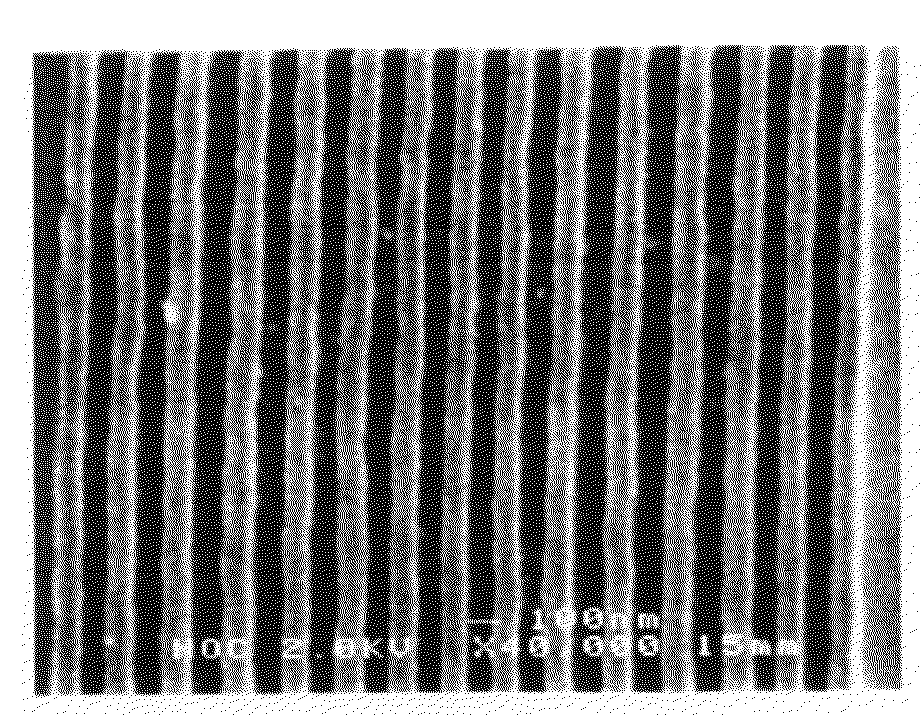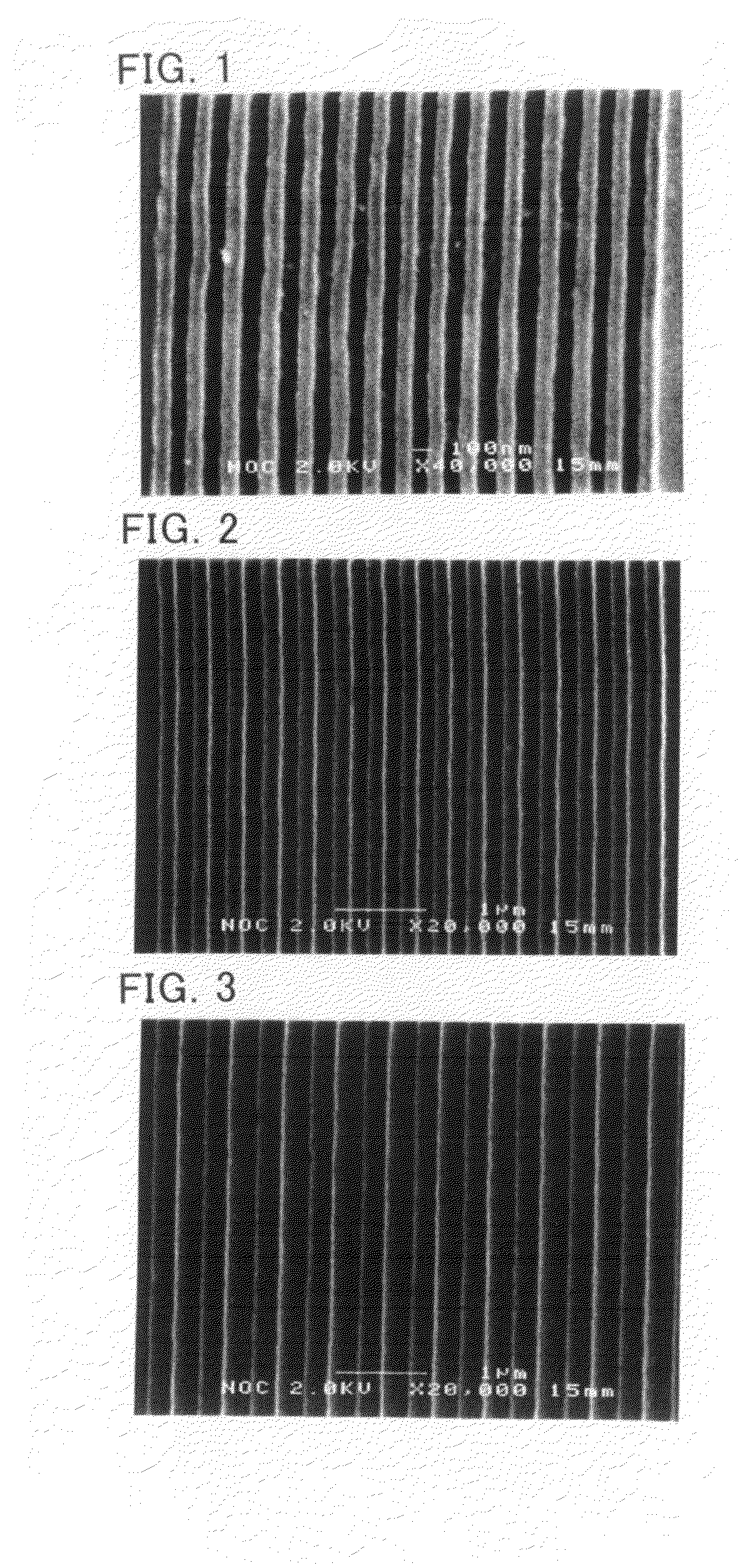Wire-grid polarizer, method for producing the wire-grid polarizer, retardation film and liquid crystal display device using the retardation film
- Summary
- Abstract
- Description
- Claims
- Application Information
AI Technical Summary
Benefits of technology
Problems solved by technology
Method used
Image
Examples
example 1
[0052]Firstly, prepared were a silica-glass mold (produced by NTT-AT Nanofabrication Corporation, product name “NIM-80L RESO”), a UV curable resin (produced by TOAGOSEI CO., LTD., product name “UV-3400”), and a support film (produced by Fuji Photo Film Co., Ltd., product name “triacetylcellulose (TAC) film”, film thickness: 80 μm).
[0053]Then, several droplets of the UV curable resin were added onto the silica-glass mold including a concave part formed thereon, the concave part having a grating pattern with a grating period of 200 nm and a linewidth of 100 nm. After the resultant mold was covered with the support film, the support film was rubbed with a handroller. Thereby, the UV curable resin was spread on the silica-glass mold uniformly. Subsequently, the UV curable resin was irradiated with an ultraviolet ray of 600 mJ / cm2 from the support film side and hardened. Thereby, a coating film of the UV curable resin in which a concave part having a grating pattern was formed was caused...
example 2
[0056]A resin film and a wire-grid polarizer were obtained in the same manner as that in Example 1 except that the UV curable resin was added dropwise onto a silica-glass mold including a concave part formed thereon, the concave part having a grating pattern with a grating period of 400 nm and a linewidth of 200 nm. Note that, in the obtained resin film, a concave part having a grating pattern with a grating period of 400 nm and a linewidth of 200 nm was formed.
[0057]FIG. 2 shows a scanning electron microphotograph of the obtained wire-grid polarizer. As shown in FIG. 2, it was observed that the obtained wire-grid polarizer had a metal grating with a grating period of 400 nm and a linewidth of 200 nm.
example 3
[0058]A resin film and a wire-grid polarizer were obtained in the same manner as that in Example 1 except that the UV curable resin was added dropwise onto a silica-glass mold including a concave part formed thereon, the concave part having a grating pattern with a grating period of 600 nm and a linewidth of 300 nm. Note that, in the obtained resin film, a concave part having a grating pattern with a grating period of 600 nm and a linewidth of 300 nm was formed.
[0059]FIG. 3 shows a scanning electron microphotograph of the obtained wire-grid polarizer. As shown in FIG. 3, it was observed that the obtained wire-grid polarizer had a metal grating with a grating period of 600 nm and a linewidth of 300 nm.
[0060]
[0061](i) Method of Measuring Degree of Polarization
[0062]The wire-grid polarizers obtained in Examples 1 to 3 were used as samples. The microspectroscope used here was a transmission polarizing microscope (produced by Minolta Co., Ltd.) equipped with a spectroscope (produced by H...
PUM
| Property | Measurement | Unit |
|---|---|---|
| Nanoscale particle size | aaaaa | aaaaa |
| Nanoscale particle size | aaaaa | aaaaa |
| Transmittivity | aaaaa | aaaaa |
Abstract
Description
Claims
Application Information
 Login to view more
Login to view more - R&D Engineer
- R&D Manager
- IP Professional
- Industry Leading Data Capabilities
- Powerful AI technology
- Patent DNA Extraction
Browse by: Latest US Patents, China's latest patents, Technical Efficacy Thesaurus, Application Domain, Technology Topic.
© 2024 PatSnap. All rights reserved.Legal|Privacy policy|Modern Slavery Act Transparency Statement|Sitemap



